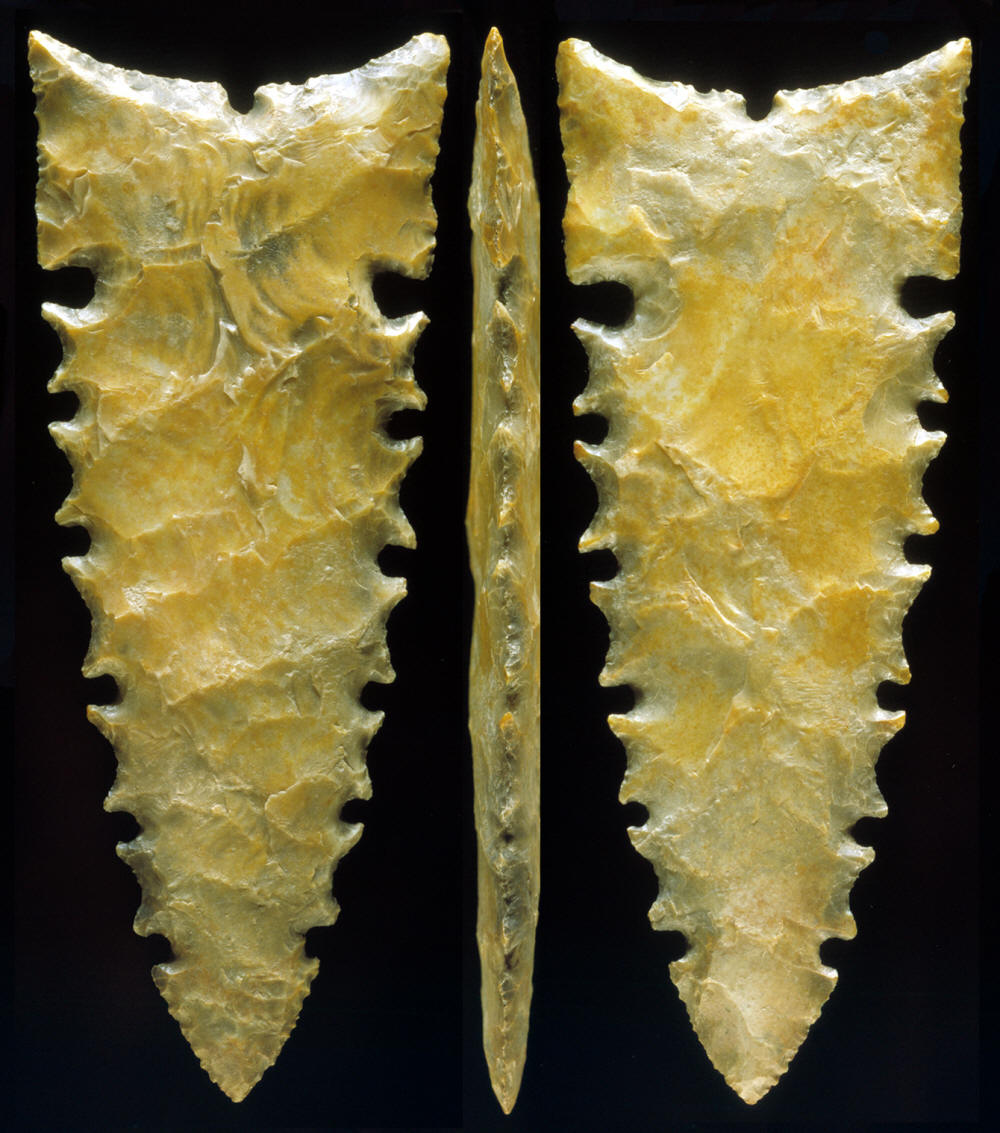|
TUSSINGER ECCENTRIC
This eccentric was once in Claude Stone's collection.
At one time he had the largest collection of Tussinger eccentrics in
Illinois. This particular example is technologically inconsistent
when it's compared to other examples in the collection. The biface from which it
was made was manufactured using an advanced lithic technology
that was in use almost exclusively by early Clovis culture
flintknappers well before 10,000 years ago. In fact it may have once
been a Clovis point. The large percussion
flake scars form a pattern that are parallel and oblique. This is a
classic Paleo-Indian bifacial reduction technique. But the edge work
that finished the biface can only relate to
something done by a much later Stone Age culture. There is nothing
in the archaeological record that even comes close to the design
pattern of
this eccentric. Another contradictory point of interest is the fact
that much of the deep surface patina was removed along the edges
when the eccentric was punch flaked into shape.
|
